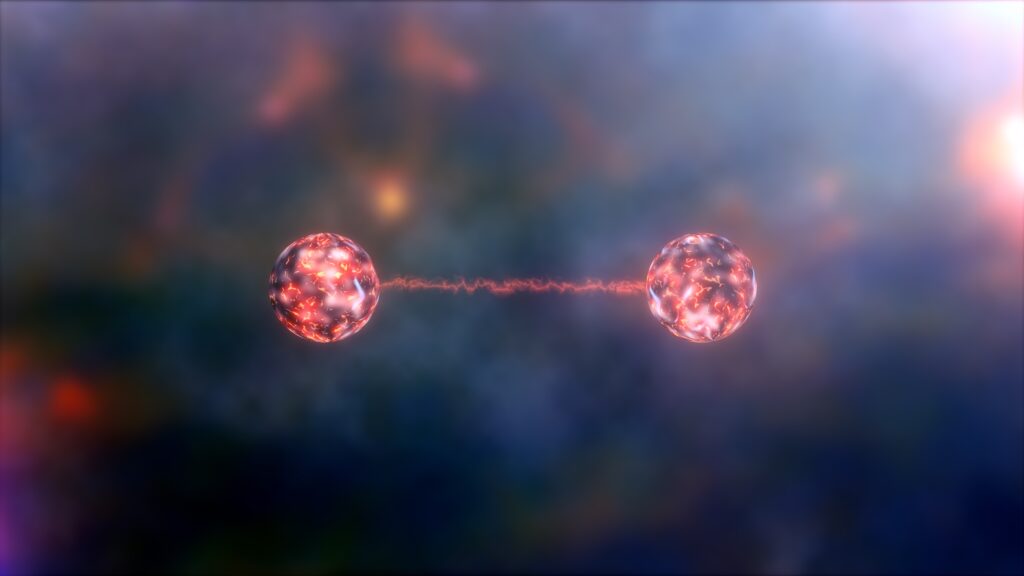Spinoza was an Idealist
Reading | Philosophy
![]() Michael Asher, BA, FRSL | 2023-02-05
Michael Asher, BA, FRSL | 2023-02-05

Spinoza is wrongly considered a Pantheist for whom God is simply the physical world. Instead, a careful read of the Ethics reveals Spinoza to be an Idealist, argues Michael Asher.
“History,” wrote Norwegian philosopher Arne Naess, “is littered with the remains of cultures that lost the equilibrium” [1]. Naess, mountaineer and father of the Deep Ecology Movement, based his philosophy, Ecosophy T, on Spinoza’s work, the Ethics, published in 1677. Having become fascinated by Spinoza at the age of seventeen, he would carry the book with him on climbing expeditions to be read over and pondered in quiet moments. A mathematician, and, in his early career, a Behaviorist, Naess admired the geometrical precision of the Ethics, and regarded Spinoza as the proper philosopher for the culture of the post-industrial age. He believed Deep Ecology was the harbinger of that age. “… even if we cannot … imitate (indigenous) cultures,” he wrote, “we shall have to establish post-industrial societies in equilibrium. Spinoza may be an important source of inspiration in this quest” [2].
It was, above all, Spinoza’s dictum Deus sive Natura—God or Nature, in Part 5 of the Ethics—that inspired Naess: he was convinced that Spinoza’s work was compatible with what he referred to as field ecology, that is, ecological science. “No great philosopher,” he wrote, “has so much to offer in the way of clarification and articulation of basic ecological attitudes as … Spinoza” [3].
He added that while, in his view, there had been three previous traditions about Spinoza’s work—as atheist, romantic, and what he called substance philosopher—he placed himself firmly in the fourth or twentieth century tradition: the idea that God is immanent; that every living thing partakes of God. “God is constantly creating the world,” he wrote, “by being the creative force in Nature … I am inclined to accept such a concept of God as a single creative force” [4]. Only by understanding particular things as manifestations of God or Nature, he claimed, could the realization of union with the whole of nature be accomplished [5].
In theological terms, Naess regarded Spinoza as a Pantheist, the label still most frequently assigned to him in current thought. The idea that God is nature and nature God—that “no new qualities are attributed to nature other than the known qualities of nature itself” [6]—is arguably a non-religious discourse, since God appears to be just another name for the material universe.
Naess, who had rejected Christianity as a youth and declared himself an unbeliever, said that he was uncomfortable using the word God [7] due to its invocation of preconceived ideas [8]. He was adamant that there was nothing in Spinoza’s work that suggested an asymmetry between God and nature. “Spinoza’s concept of Nature and its manifestations,” he wrote, “lacks the features which make nature … something inferior to spirit, or to God” [9]. Referring to what he saw as the “tendency to look on the body as something more crude than spirit,” he pointed out that “both field ecologists and Spinoza oppose most forms of Idealism, Spiritism, and, of course, Moralism” [10].
Naess seems to have intended this statement as a bolster for his contention that Spinoza’s metaphysics was non-religious, and that Spinoza was indeed the key philosopher for post-industrial culture. His relegation of Idealism to the same category as Spiritism, with its suggestion of mediums and Ouija boards, and Moralism—concerned in most people’s minds with prurient sexuality—reflects the low esteem in which Idealism was held in his milieu. But, intellectual fashions aside, was Naess correct in saying that Spinoza opposed Idealism? Was he right in maintaining that the Ethics is essentially a non-religious discourse?
In 1896, the Scottish philosopher J. Clark Murray published a paper entitled The Idealism of Spinoza, in the Philosophical Review. Though the paper presents a solid case for Spinoza as Idealist, Naess was either unaware of it or ignored it. Clark Murray’s work may have been swept under the carpet, but the time may now be right for its resurrection. In 2021, the English philosopher Clare Carlisle published Spinoza’s Religion – A New Reading of the Ethics, a re-assessment of the religious nature of Spinoza’s metaphysics that may well mark a turning-point, perhaps even the start of what Naess might have called the fifth or twenty-first century tradition of Spinoza.
Most of those who have seen Spinoza as a Pantheist—a champion of immanence—have, like Naess, taken the phrase Deus sive Natura—God or Nature—as the key to his work. It was Clark Murray, though, who noted in his 1896 paper that “a philosophical system must be interpreted, not by comparatively brief passages in its exposition, but by the essential drift of the exposition as a whole” [11].
Tracking this essential drift, Carlisle has shown that the process of reading the Ethics “follows a looping line, halting and circling back again and again to revisit elements of the text as directed by Spinoza’s demonstrations” [12]. Her conclusion is that the structure of the Ethics rests on twenty-six super propositions, some of which are repeated many times. By measuring the frequency of such propositions, one might “create a map of the Ethics that would resemble the constellations of the night sky, with some stars—the most intensive propositions—burning brighter than the others” [13].
The brightest star of the Ethics, Carlisle concludes, is the proposition she refers to as Being-in-God, which appears in Part 1, and is entitled Of God:
“Whatever is, is in God, and nothing can be, or be conceived without God.”
This proposition gives quite a different sense to Spinoza’s essential drift from Deus sive Natura. Yet, as Carlisle points out, Being-in-God bears more weight than any other proposition in the text. Following Spinoza’s looping lines of reference, she observes, “If a reader were to trace … every single proposition back to its first foundations, she would revisit Being-in-God a total of 228 times always starting from a different starting point” [14].
This is considerably more than Deus sive Natura, which occurs in only two passages in the Ethics, and not at all in Part 1, Of God, where it might have been expected, had Spinoza intended to give it the importance accorded to it by Naess and others. It is hard to resist Carlisle’s conclusion that it is not God or Nature but Being-in-God that is “the fundamental tenet of Spinoza’s thought” [15].
At first sight Being-in-God seems a clear statement of Idealism, but some scholars have pointed out that much depends on what Spinoza intended by the word in. The philosopher Roger Scruton, for example, in his book Spinoza—A Very Short Introduction, has gone so far as to claim that Spinoza’s ‘in’ does not mean here what it normally means in English (or in Latin, the original language of the Ethics), but that Spinoza’s usage, as Scruton puts it, “conflicts with the language of man” [16].
Scruton uses the example of a club and its members to illustrate his point. The activities that are said to be those of a club, he writes, are actually the activities of its individual members, and only notionally of an independent entity called a club. The club is, in fact, dependent for its existence and nature on the activities of its members. “In Spinoza’s idiom,” declares Scruton, “the club is in its members. We, of course, would say that the members are in the club” [17].
Unpacking this critique requires a closer look at the elements of Spinoza’s metaphysics. According to Spinoza, nothing exists besides substance (God) and modes (modifications, finite forms). While he says that substance is that which is in itself (“in se”), a mode is that which is in another (“in alio”). Spinoza mentions a third element, attributes—ways of perceiving and expressing substance—which we may consider later. In Scruton’s example, the club members seem to represent modes, while the club itself is substance. Scruton construes Spinoza as saying that the activities of substance—God—are actually the activities of its modes—God’s manifestations—suggesting that Spinoza is proposing that substance is in its modes.
As Carlyle has pointed out, this is not the case. “Being-in-God is an ontological relation of dependency,” she writes, “which involves being caused by God and being conceived by God.” Spinoza’s very first proposition is that whatever is, is in itself or in another. “Since there is only one substance, namely God, everything that is, is in God. This includes God. God is substance, therefore God is in se” [18].
Scruton, like Naess, seems to have understood Spinoza’s God as the God of Deus sive Natura: a synonym for nature, immanent in all that exists, but not transcending it. As we have seen, Naess’s reading of Spinoza rejects any idea of asymmetry between God and Nature. Undoubtedly, for Naess, a transcendent God meant a remote God standing outside the universe: the Blind Watchmaker of 19th century mechanism. “For Spinoza,” he wrote, “God, Deus, is immanent, not something outside our world” [19]. Naess, who scarcely refers to Being-in-God at all in his writing, does not seem to have countenanced the idea that in a mental—as opposed to a physical—universe, God could be, and in fact must be, both immanent and transcendent.
Curiously, though, while he appears to underscore the immanence in Spinoza’s metaphysics, Naess also admits the presence of transcendence, albeit in a left-handed way, as if Spinoza had not quite understood his own argument. “I suspect,” he writes, “… that (Spinoza) never completely gave up … the transcendent God he loved in his youth. As a result he may not have managed to develop a system in which God clearly and consistently occurs as immanent … The transcendent God of religion (my italics) seems to appear from time to time (in the Ethics) … and threatens the consistently philosophical thinking and articulation” [20].
These observations seem to fly in the face of Naess’s laudatory remarks about Spinoza as an inspiration for the post-industrial culture. The fact that he seems to be accusing Spinoza of failing to produce an immanent God and his apparent alarm that a transcendent God appears from time to time in the Ethics, amount to a critique.
As Carlisle suggests, both immanence and transcendence are implicit in Spinoza’s Being-in-God proposition, the first Axiom in the Ethics. Since nothing can be conceived without God, God must also be the means by which everything is conceived. As Spinoza says, this indicates that God must exist of necessity. To deny God’s existence would be to deny that anything at all exists, even the idea of God’s non-existence.
Both Scruton and Naess seem to concur that, as Naess wrote, “Nature or God (substance) is nothing apart from the manifestations (modes)” [21]. To examine what this means, it is perhaps worth providing what I think—following Carlisle’s discourse—is a more effective image of Being-in-God than Scruton’s club analogy. Idealist philosopher Bernardo Kastrup’s notable whirlpool metaphor seems suitable for this purpose.
Water flowing along the length of a stream is not localized, but a whirlpool in the stream is a visible localization of the stream’s substance: there is nothing in the whirlpool that is not water. The whirlpool has identifiable boundaries, but no stand-alone existence: it cannot be removed from the stream. It is clearly different from the stream, but not separate from it. While the whirlpool depends on the stream for its being, the stream without the whirlpool would still be the stream: it is logically and ontologically prior to the whirlpool. We can safely say that the whirlpool is in the stream without being accused of abusing the vernacular [22].
In the same way, Spinoza’s modes are distinct and identifiable images of the localization of substance. There is nothing in the modes that is not substance. Modes have no stand-alone existence and cannot be removed from substance. Substance is logically and ontologically prior to modes: they are different, but not separate. To maintain, as Naess and Scruton have, that God is nothing but the manifestations—that substance is no more than its modes—would be like saying that the stream is no more than its whirlpools.
If Being-in-God is the fundamental tenet of Spinoza’s thought, as Carlisle tells us, then it is also worth returning to the word conceive, which is almost as crucial to Spinoza’s metaphysics as the word in; especially to an Idealist reading. Conception brings us to the idea of attributes, which is Spinoza’s way of approaching the mind-body problem.
Unlike modes, which are the manifestation of substance in alio, attributes are substance, perceived and expressed in a certain way. Substance has infinite attributes, but humans only participate in two of them: thought (mind or consciousness) and extension (body or matter). “Spinoza defines the human mind as the idea of the body,” Carlisle writes, “in other words, consciousness of the body. A human mind perceives only two attributes, its own way of being which is thought or consciousness, and the way of being of the body which is its object. This means that the fullness of God’s being eludes us” [23].
Although the invoking of two attributes has brought Spinoza accusations of dualism, there seems to be a hidden assumption in the Ethics. While the attributes of thought and extension appear at first to be in symmetrical relation, in fact they are different, and the distinction comes down to the word conceived. Since extension (body, matter) only exists in as much as it is conceived by God (substance), and since thought is the attribute of substance through which it is conceived, then thought (or consciousness) is primary. This applies to all the other infinite attributes of substance in which humans do not participate, and whose nature is unknown.
In proposing that the human mind is the idea of the body, then, Spinoza is telling us that the body and the human mind are not separate, but modes of substance seen through the attribute of infinite consciousness; or, put another way, ideas in the mind of God, which is one thing, not two. If we need proof of Spinoza’s Idealism, we surely have no need to look further than this.
In theological terms, indeed, Spinoza’s metaphysics is not Pantheist, as Naess and others suggest, but Panentheist: the view that whatever is, is in God. Panentheism is a “way of expressing God’s transcendence,” [24] as Carlisle says, and this transcendence is articulated in Spinoza’s use of the phrase natura naturans (lit. nature naturing) for the divine creator, as opposed to natura naturata (lit. nature natured) for created beings. The two terms do not connote distinct entities, but neither are they different names for the same reality. Natura naturans is the stream, while Natura naturata signifies the finite localizations of the stream’s flow—the whirlpool. The stream is not the transitive creator of the whirlpool, in the sense of creating it as a separate entity; and just as the whirlpool is in the stream, so “Natura naturata (the created) is in Natura naturans (the creator) and dependent on it” [25]. Like stream and whirlpool, “the relationship of Being-in expresses both difference and identity” [26].
Returning to the phrase that so attracted Naess and many others—Deus sive Natura, God or Nature—it is clear, as Carlisle suggests, that Spinoza intended Natura here to mean Natura naturans, rather than Natura naturata. That Naess interpreted Deus sive Natura as defining God’s immanence seems at first curious, since he saw God or Nature as “constantly creating the world by being the creative force in nature.” On closer examination, though, it appears that Naess is not referring to the ontological primacy of the creator, but to the creative force as perpetuated by the “living creatures (which) are involved in creation” [27]; in other words, transitive creation through finite entities or modes.
In his reading of Spinoza, Naess seems almost to have indulged in confirmation bias, sifting the evidence and overlooking the obvious importance of Being-in-God to the essential drift of the discourse. It is as if he was determined not to find anything truly religious—that is, beyond Pantheism—in Spinoza’s work. This is interesting because it appears to be an instance of how the prevailing zeitgeist can influence even the most erudite and articulate scholars into what might be called a biased reading of a metaphysics. From the beginning, it seems, Spinoza’s work has been either rejected for failing to reflect the dominant worldview, or honoured falsely for allegedly extolling it, as in Naess’s case.
Ironically, perhaps, Carlisle’s Spinoza would have been more suited to Naess’s Ecosophy T than his own secular reading, since one of the main implications of Being-in-God is that humans are not separate from nature. In his final book, Life’s Philosophy (2002), Naess admitted that, while he preferred not to talk about religious feeling, people often called him religious or spiritual, “because I believe that living creatures have an intrinsic worth of their own, and also that there are fundamental intuitions about what is unjust” [28]. It would take one of a new generation of deep ecologists, physicist Frijof Capra, to openly declare that “(Deep) ecology and spirituality are fundamentally connected because deep ecological awareness is, ultimately, spiritual awareness” [29].
In the same way, Carlisle has pointed out, had the seventeenth century churches been receptive to Spinoza, rather than condemning him as an atheist, his work might have “insulated Christianity from the ravages of secularism to come” [30]. The idea of Spinoza as atheist, she has written, precludes an understanding of his essential tenet, Being-in-God, and renders much of Part 5 of the Ethics irrelevant. “If we assume that Deus sive Natura simply reduces God to a familiar modern notion of nature, stripped of any theological meaning,” she has written, “then we lose the conception of God (or Natura naturans) as ontological ground which is so integral to Spinoza’s metaphysics” [31].
With regard to Spinoza as Idealist, then, though Carlisle does not specifically mention Idealism in relation to Being-in-God, she does suggest that “concepts such as non-duality can gesture to (its) meaning” [32]. Non-duality—Advaita Vedanta—is, of course, synonymous with Analytic Idealism. Indeed, while Carlisle prefers the name God because of its long history and cultural associations, she also explains that a name can do no more than point to “a plenitude of being that eludes us—although we cannot exist or conceive ourselves apart from it” [33]. In this light, one might add, the word consciousness could be substituted for God—as is customary in Analytic Idealism—without any loss of coherence. “Whatever is, is in consciousness, and nothing can be, or be conceived, without consciousness.”
Finally, to return to where we started, was Naess right to suggest that Spinoza was the proper philosopher for the post-industrial era? I think he was, but for the wrong reasons. I believe that Carlisle’s book Spinoza’s Religion has opened the way for a reading of Spinoza that is most appropriate for the new culture, because it has shown us a religious, Idealist Spinoza, and the culture of the post-industrial age cannot but be both Idealist and religious.
[Editor’s note: it is curious that, to this day, many scholars continue to argue that, for Spinoza, God and physical nature were one and the same thing; for Spinoza himself categorically refuted this claim in a letter to his friend Henry Oldenburg, written towards the end of 1675. Here is the relevant passage: “I maintain that God is the immanent cause, as the phrase is, of all things, and not the transitive cause. All things, I say with Paul, are in God and move in God. … However, as to the view of certain people that [my book] the Tractatus Theologico-Politicus rests on the identification of God with Nature (by the latter of which they understand a kind of mass or corporeal matter) they are quite mistaken.” How could the man have been less ambiguous? Here is the same passage in the original Latin: “Deum enim rerum omnium causam immanentem, ut ajunt, non verò transeuntem statuo. Omnia, inquam, in Deo esse, & in Deo moveri cum Paulo affirmo … Attamen quòd quidam putant, Tractatum Theologico-Politicum eo niti, quòd Deus, & Natura (per quam massam quandam, sive materiam corpoream intelligunt) unum, & idem sint, totâ errant viâ” (See: Epistolae doctorum quorundam virorum ad B.d.S. et auctoris responsiones, Benedictus de Spinoza, 1677 (postumus), Epistola LXXIII). Clearly, Spinoza identified natura naturans (nature begetting, i.e. the underlying, dynamic, creative but hidden side of nature, or nature as it is in itself) with God, but not natura naturata (nature begotten, the material, physical, measurable side of nature). To think that Spinoza identified God with the physical world as it presents itself to us is a rather trivial error. Spinoza identified God with what underlies the physical world; i.e. with that which appears to us as the physical world, but whose essential nature remains hidden from direct observation. For Spinoza, physical nature is but an appearance, an image—what Schoppenhauer called a ‘representation’ or “Vorstellung”—of God, but not the being-in-itself of God.]
Notes
- Arne Naess Spinoza & Ecology P45
- Ibid
- Ibid P50
- Arne Naess Life’s Philosophy P8
- Arne Naess Spinoza & Ecology P50
- https://www.bernardokastrup.com 2018
- Arne Naess Life’s Philosophy P8
- Ibid
- Arne Naess Spinoza & Ecology P51
- Ibid P47
- Clark Murray The Idealism of Spinoza P473
- Clare Carlisle Spinoza’s Religion P36
- Ibid 47
- Ibid
- Ibid P56
- Roger Scruton Spinoza – a Very Short Introduction P40
- Ibid
- Carlisle P36
- Arne Naess Life’s Philosophy P8
- Arne Naess The Ecology of Wisdom P256
- Arnea Naess Spinoza & Ecology P50
- Benardo Kastrup Why Materialism is Baloney P91
- Carlisle P69
- Carlisle P64
- Ibid
- Arne Naess Life’s Philosophy P8
- Ibid P8
- Arne Naess Life’s Philosophy P8
- Frijof Capra: com/fritjof-capra-quotes. Updated 2022
- Carlisle P60
- Carlisle P186
- Carlisle P36
- Carlisle P186
Bibliography
Carlisle, Clare Spinoza’s Religion – A New Reading of the Ethics 2021
Deleuze, Gilles Spinoza – Practical Philosophy 1988
Garret, Don Spinoza’s Ontological Argument – The Philosophical Review LXXXVII No.2 1979
Kastrup, Bernardo Why Materialism is Baloney 2014
Koistinen, Olli Cambridge Companion to Spinoza’s Ethics 2010
Lord, Beth Spinoza’s Ethics 2010
Murray, J.Clark The Idealism of Spinoza. Philosophical Review Vol 5 No5 1896
Naess, Arne Spinoza & Ecology – undated paper, University of Oslo Ecology, Community & Lifestyle – Outline of an Ecosophy. Trans D. Rothenberg 1989
Life’s Philosophy – Reason & Feeling in a Deeper World Trans R. Huntford 2002
The Ecology of Wisdom – Writings of Arne Naess 2008
Nadler, Steven Think Least of Death – Spinoza on How to Live and How to Die 2020
Scruton, Roger Spinoza – A Very Short Introduction 1986, 2002
Spinoza, Benedict The Ethics Trans R.H.M Elwes 2001

Essentia Foundation communicates, in an accessible but rigorous manner, the latest results in science and philosophy that point to the mental nature of reality. We are committed to strict, academic-level curation of the material we publish.
Recently published
Reading
Essays
Seeing
Videos
Let us build the future of our culture together
Essentia Foundation is a registered non-profit committed to making its content as accessible as possible. Therefore, we depend on contributions from people like you to continue to do our work. There are many ways to contribute.















